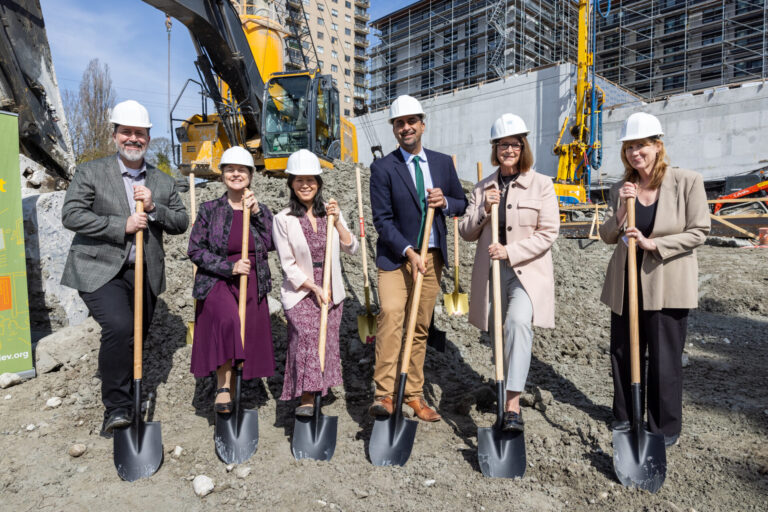The Government of Ontario announced plans to streamline and simplify the 50-year-old environmental assessment (EA) process to make it easier and faster to build infrastructure.
“As Ontario grows at record speed, it’s never been more important to build new roads, highways, public transit and homes, so we can get drivers out of bumper-to-bumper traffic and bring the dream of home ownership into reach for more people,” said Andrea Khanjin, Minister of the Environment, Conservation and Parks. “Our government is supporting municipal partners by streamlining and simplifying complex environmental assessment processes to get shovels in the ground and finish major projects faster. We’re doing so while protecting strong environmental oversight and ensuring meaningful consultations before projects can move forward.”
After several months of consultations, one of the changes to the EA process is moving to a project list approach, which will list the types of infrastructure projects that still require the highest level of environmental assessment such as large landfills and electricity generation facilities. The project list approach is a shift from the previous focus on project proponents to what the project is and its potential for environmental effects. Using a project list approach will bring Ontario in line with other similar jurisdictions, including the federal government, Quebec and British Columbia.
“As Ontario’s population continues to grow, our government is ensuring we have the transportation network and infrastructure needed to build a better province for generations to come. By streamlining building approval processes, we can get shovels in the ground faster and deliver on our historic infrastructure investments to get cars and trains moving,” said Prabmeet Sarkaria, Minister of Transportation.
These changes, which come into effect on February 22, 2024, will help get highways, rail and electricity transmission lines built up to four years sooner by allowing them to follow a streamlined EA process that will save time and money while maintaining environmental safeguards. The projects that are being moved to streamlined processes continue to have requirements to identify and mitigate environmental impacts and for consultation, including Indigenous consultation, prior to implementation.
According to the Province, for example, the comprehensive EA process for the East-West Tie Transmission Project that runs from Wawa to Lakehead in Northern Ontario took more than five years to complete. With these changes, a similar project could follow a streamlined process and be completed within two years, while still undergoing a mandatory consultation process and continued strong environmental oversight. Some of the time savings are a result of the streamlined processes not requiring a Terms of Reference (up to two years) for the project as the streamlined process already sets out the requirements.
“Hydro One is building critical electricity infrastructure across the province to meet the growing electricity demand in Ontario and welcomes changes to Environmental Assessments that modernize and streamline the process. We take our responsibility and stewardship of our natural resources seriously and are committed to ensuring all of our infrastructure projects are built in an environmentally responsible manner, with local interests in mind,” said Andrew Spencer, executive vice president, Capital Portfolio Delivery, Hydro One.
The Ontario government is also beginning consultation, including with municipal partners, on a new streamlined process for certain municipal water, shoreline and sewage system projects. This new process would help accelerate project planning by limiting the process to six months from 18 months or more. These time changes could be achieved by providing a regulated timeline, whereas under the current process there is no time limit.
The Province said an example of a municipal project that would be able to go through this proposed process is building a new large wastewater treatment plant. To build this, the municipal class EA process can take up to two years or more. The proposed process could see the EA process completed in as little as six months.
“Modernizing Environmental Assessments for municipal infrastructure will help reduce the duplication of approvals necessary for the installation of low-risk infrastructure that is a required part of new housing developments. Streamlining this approvals process will save time and resources for individuals, businesses, and government agencies without compromising any environmental outcomes. By simplifying regulations and reducing administrative burdens, Ontario is making it easier for businesses to operate and invest in growth,” said Steven Crombie, director of Government Relations and Public Relations, Ontario Sewer and Watermain Construction Association.
The government is also considering a minor change to the Environmental Assessment Act that would make it clearer for municipalities, provincial ministries and agencies that expropriation is one of the ways property can be acquired for a project before the EA process is completed.
This measure is part of the upcoming Get It Done Act, that will kick off the spring sitting of the legislature on February 20, 2024.
Featured image: Andrea Khanjin, Minister of the Environment, Conservation and Parks (centre), announced plans to streamline and simplify the 50-year-old environmental assessment (EA) process. (Government of Ontario)











